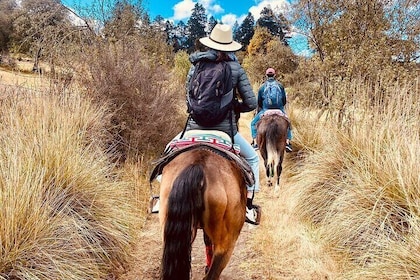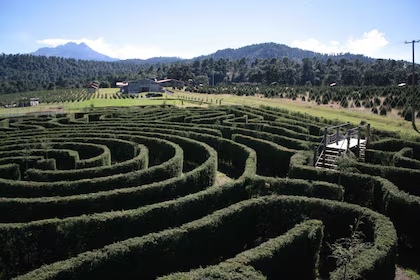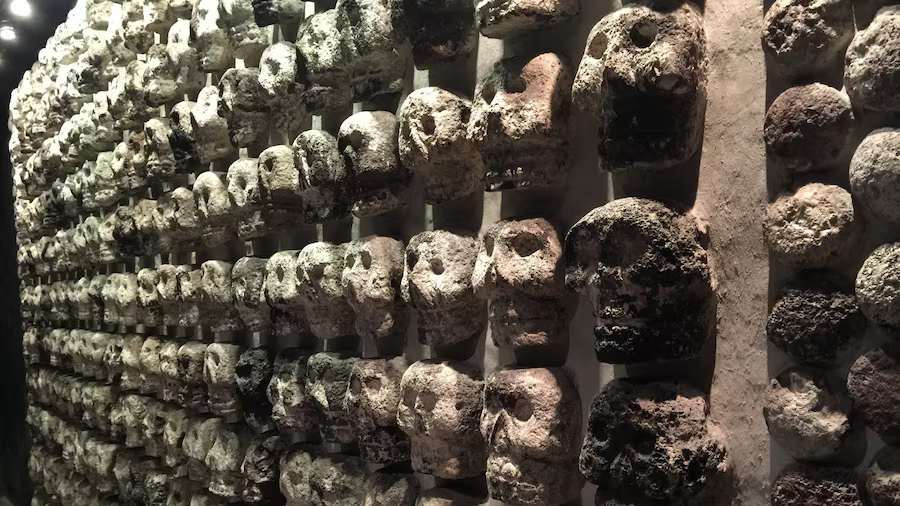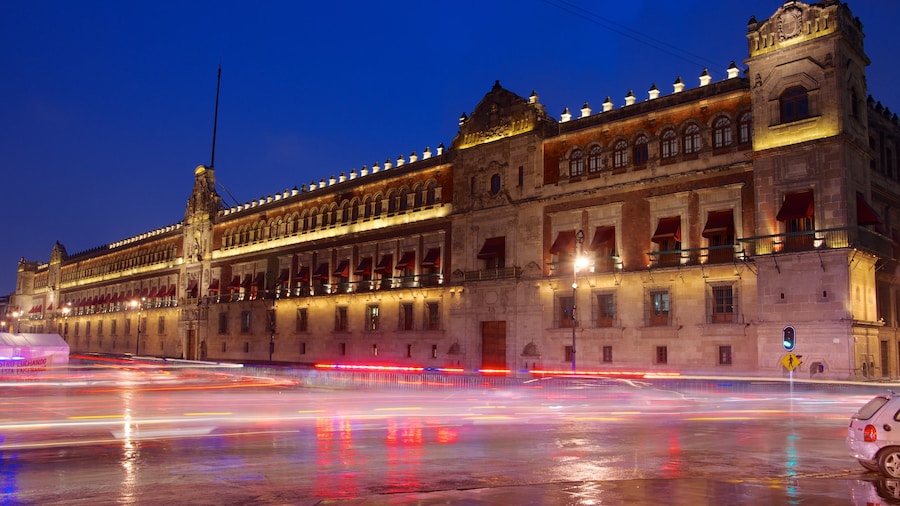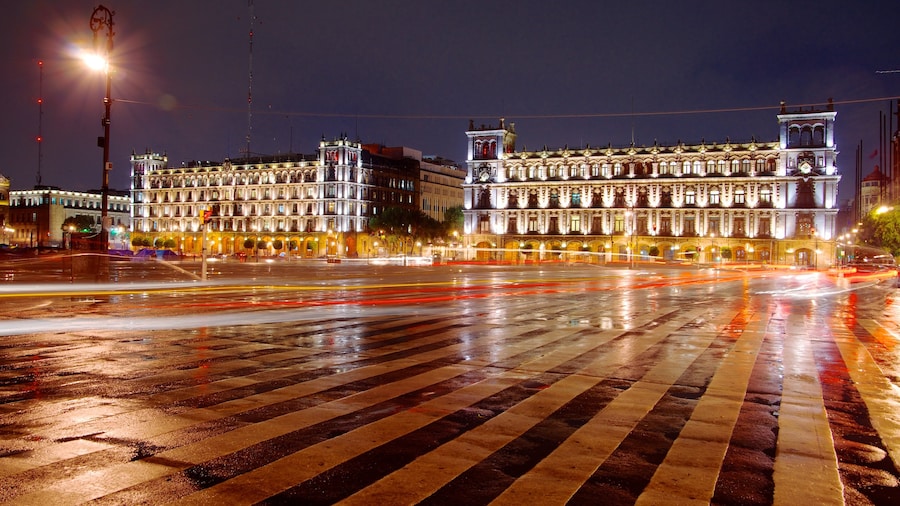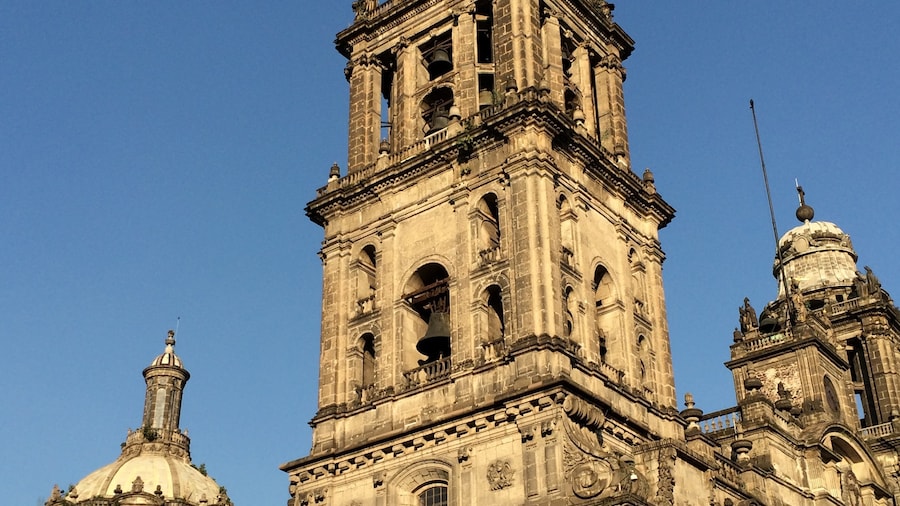Explore part of an ancient Aztec city that was hidden underground for 400 years.
Take a tour of the Templo Mayor (the Great Pyramid) and discover the history of an ancient city and a temple that the Aztecs believed to be the center of the universe.
The Templo Mayor was once the religious hub of the Aztec city of Tenochtitlan. The city and temple were destroyed during the Spanish Conquest in the 16th century. Mexico City was built atop the ruins, hiding the Aztec Empire for hundreds of years. Templo Mayor was finally excavated in the 1970s and today is one of the most significant historical sites in the area.
Visit the onsite museum, which holds relics that archaeologists uncovered while exposing the ancient city. The exhibits offer a snapshot of what life was like during the time of the Aztec Empire and is divided into eight areas. Each area covers a facet of Templo Mayor, from rituals and economy to agriculture. Be sure to take a look at the model reconstruction in the museum’s entrance, which shows what Templo Mayor looked like in its heyday.
If you don’t speak Spanish, sign up in advance for English-language tours to get the most out of your visit. The entrance fee covers admission to both the museum and the ruins, and allows a much better understanding of the area.
The site is packed with noteworthy structures, including temples, shrines, and pyramids. Templo Mayor’s construction was inspired by a mythical mountain named Coatepec (“The Hill of the Serpent”), so take note of the many snake and reptilian carvings that pervade the architecture. Human sacrifice was commonplace at the temple. This is clear when you look at the Tzompantli-Shrine, a large wall covered with the skulls of victims.
Archaeologists have also uncovered residential buildings, a ballpark and other temples, so take the time to look around the whole site.
The Aztecs believed that Templo Mayor was the literal center of the universe, and it stands out today as a focal point of pre-Hispanic history. It is conveniently located a few minutes from Mexico City’s main square, the Zocalo.
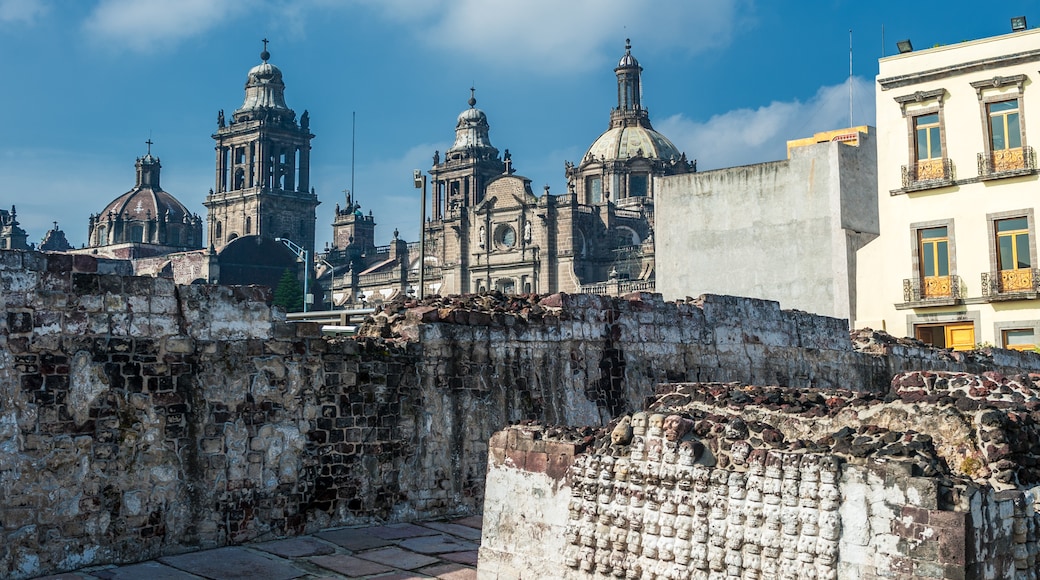

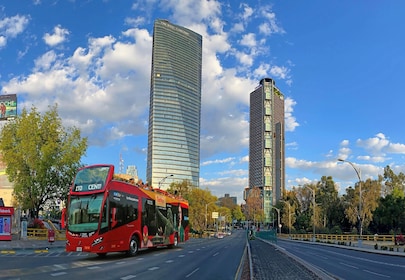

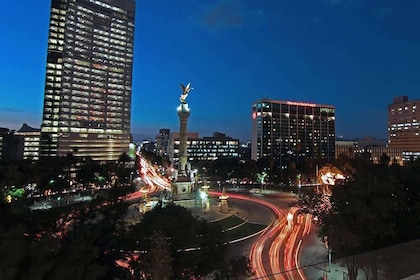


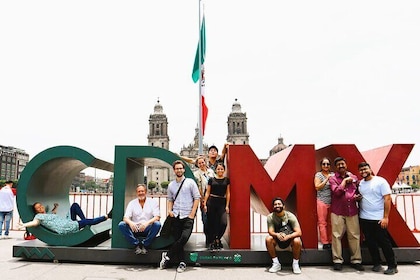


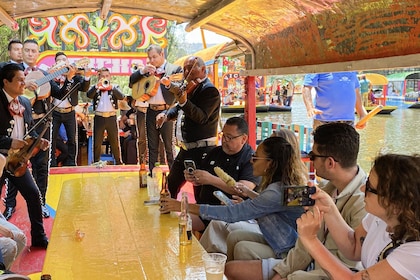

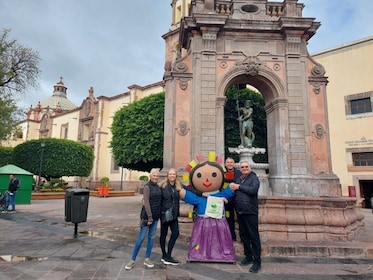

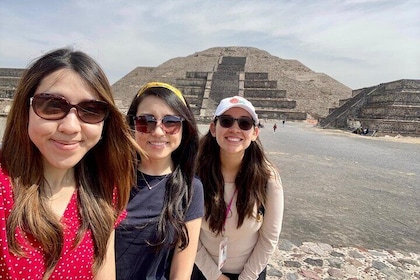



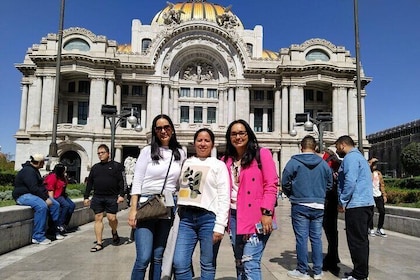









![Frida Kahlo VIP [Museum Tickets Included] Walk, Markets & Churros](https://mediaim.expedia.com/localexpert/46412059/4d1c2a37-203c-41d5-9403-6c5a28e68093.jpg?impolicy=resizecrop&rw=500&rh=280)









![Frida Kahlo VIP [Museum Tickets Included] Bike, Markets & Churros](https://mediaim.expedia.com/localexpert/46206678/8c901bf2-984d-4df4-9b1b-c5679c6669c3.jpg?impolicy=resizecrop&rw=500&rh=280)
